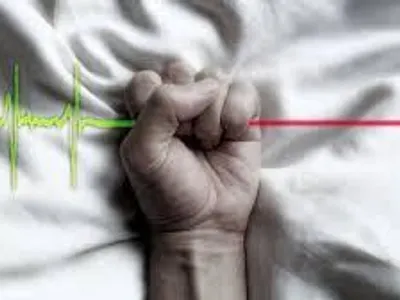Euthanasia

Euthanasia comes in several different forms. Euthanasia can be active, passive, voluntary, non- voluntary, or involuntary. The form depends on the circumstances of the patient’s condition.
Active euthanasia is when someone decides to end their life, and doctors may prescribe a lethal dose of medications, or give a lethal injection. Passive euthanasia is when medication necessary for life is withdrawn, causing them to die.
Voluntary euthanasia is when someone suffering wants to die, and asks for help in their death, and they have proper mental stability to make a decision. Non-Voluntary euthanasia is when the person is too ill and unable to ask for euthanasia, but it is given because the wish of death was told to someone else. Involuntary euthanasia is when a person is given death against their will.
Some of these forms, especially involuntary, may be classified as murder or manslaughter.
End of life care is also contributing to the euthanasia controversy. When a person is guaranteed to die soon, they have the right to sufficient care. You also have a say in your treatments, and the right to refuse treatments.
In countries such as Belgium, Luxembourg, and Holland, euthanasia is legal as long as it follows three rules. One being, “A person has made an active and voluntary request to end their life.” Another, “It is thought that they have sufficient mental capacity to make an informed decision regarding their care.” The last rule stating, “It is agreed that the person is suffering unbearably and there is not prospect for improvement in their condition.”
Some forms of euthanasia are legal in other countries, including Germany, Mexico, Switzerland, and five states in the United States.
There is a plentiful amount of arguments for euthanasia. The two most popular arguments consist of the “Ethical Argument” and the “Pragmatic Argument.” The ethical argument states that people should be free to control their own life and its end without the interference of the government. The pragmatic argument states that euthanasia is currently a “widespread practice”, so we must “regulate it properly”.
There also many arguments against euthanasia as well. These arguments are referred to as the, “Religious Argument”, “Slippery Slope Argument”, the “Medical Ethics Argument”, and the “Alternative Argument”.
The religious argument is likely the most common argument against the practice of euthanasia. It is said by supporters of this argument that only their deity has the right and privilege to end a human life. In opposition to the argument, doctors should be able to set religion aside and do what they think is best for the patient, or carry out the patient's orders, even if it involves death.
The slippery slope argument might be the most valid of all the anti-euthanasia propositions. It states that if we legalize euthanasia, doctors might just kill people instead of providing care and giving
life-saving treatment, for euthanasia is easier than putting in the effort to fulfill your role as a doctor. This may become reality, but only a corrupted system would lead to such a terrifying fate for the world. This argument's proposition is completely preventable, for legalizing euthanasia can be with restrictions, making the situation avoidable.
The medical ethics argument is most definitely the most controversial, for it has two sides. Some would say carrying out a patient's wishes and ending their suffering defies medical ethics, while some see it as a humane way of ending pain, as long as consent is given.
The alternative argument goes back to the subject of end of life care. It illustrates that if this care is available, nobody should suffer so badly that they long for death. The downside to this argument is that many families cannot afford end of life care. Those who have this care often feel as if they are a burden to their family, for money is being spent on expensive care, when they could just die and release not only their own suffering, but also the economic hardship placed upon their families.
Almost all of the arguments are completely ludicrous, for the slippery slope they speak of can be prevented, medical ethics can change, for it isn't murder, its care. Ending suffering that would be eternal isn't the horrible, murderous, inhumane practice that some people see it as. The alternative argument is biased. The people that use it likely have enough money for end of life care, yet they have never suffered as much as those who claim the wish of death for themselves. The religious argument is lethal to the current medical system. A doctor should not drop to their knees and pray while a patient suffers to the point of death; a doctor should end suffering sooner, so the patient can die peacefully, free from the agony of their ailment.
In conclusion, euthanasia is a humane way of ending pain and suffering. When someone wants to die, and you know it's true, why let them suffer? Which word irks you more? Euthanasia or suicide?
Join Qfeast to read the entire story!
Sign In. It is absolutely free!



